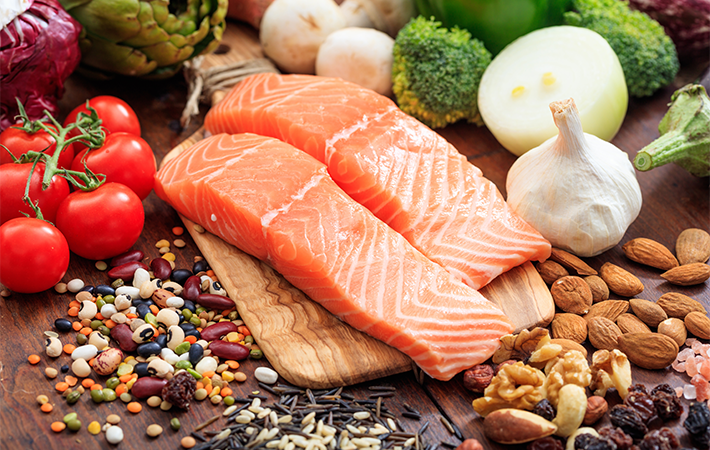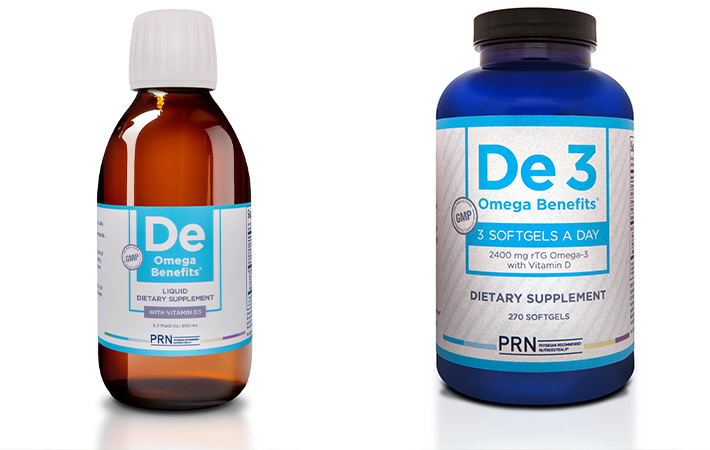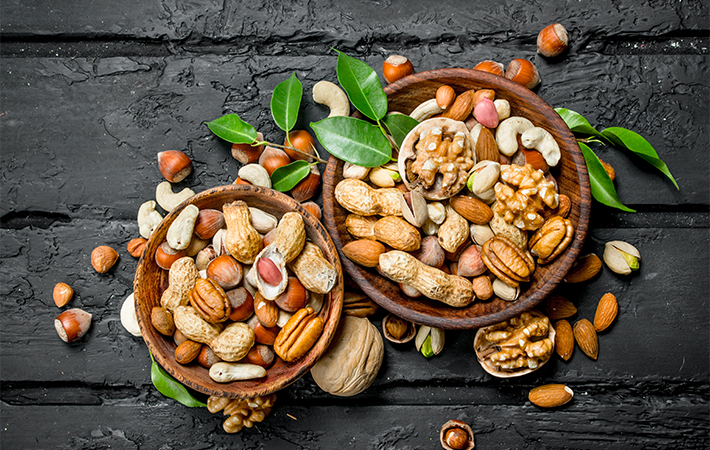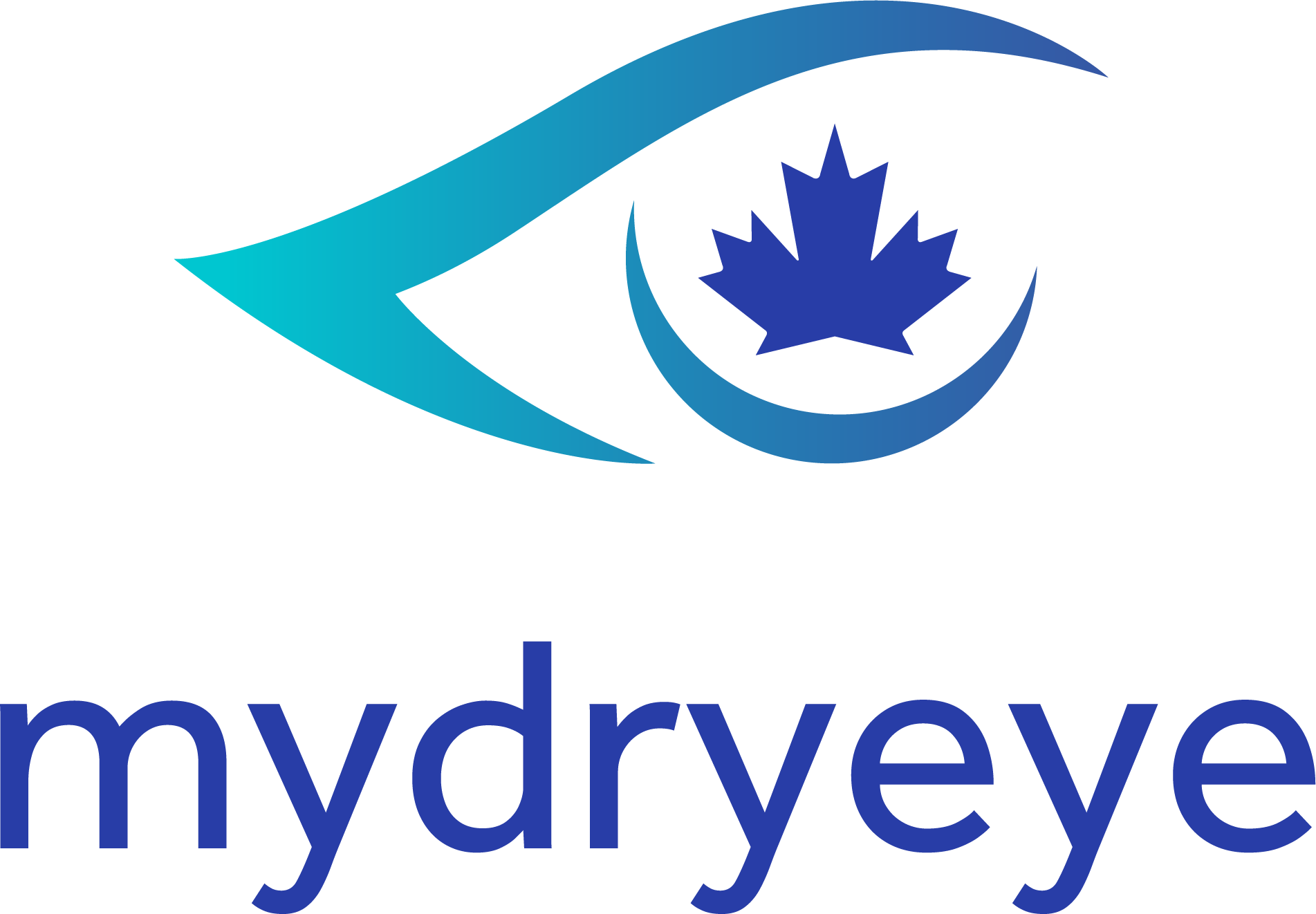Written by Dr. Diana Nguyen

Dry eye disease is one of the most common eye conditions, leaving patients with symptoms such as blurry, irritation, or watery eyes. But, did you know diet also plays a pivotal role in dry eye?
The North American diet has high levels of sugar, high levels of omega-6 and ultra-processed foods. Unfortunately, all these factors cause inflammation in the eyes, poor tear quality, and even negatively affects your body’s microbiome.
This specific type of diet can cause a higher amount of inflammatory mediators in the tears which causes burning and stinging sensations. Additionally, the critical meibum (the oil in your meibomian glands) also becomes unhealthy and clogged which leads to the tears being evaporated at a much faster rate than usual.
Today’s blog will focus on nutrition and how it can help improve dry eye symptoms naturally in conjunction with your optometrist’s recommendations. Let’s discuss five ways dietary factors can help improve dry eye symptoms.
1. Omega-3 Fatty Acids – The Power of Healthy Fats
When you have meibomian glands dysfunction (MGD), the oil tends to be more thick and usually has higher amounts of inflammation. Research shows higher omega-3 intake is linked to fewer dry eye symptoms1. Omega-3s are essential fatty acids that support tear production and reduce inflammation. They also improve the oily layer of the tear film, which prevents your tears from evaporating too quickly.
Here are examples of food sources high in quality Omega-3’s: Salmon, mackerel, anchovies, sardines and herring (remember the S.M.A.S.H acronym). Other sources also include chia seeds, hemp seeds, walnuts and flaxseeds.
If ingesting omega-3 through your diet is difficult, you can consider taking supplements instead. It is important to note that not all omega-3’s are the same so please make sure to look out for these 3 key factors:
- The omega-3 must be re-esterified triglyceride as this type of formulation allows for a higher gut absorption
- EPA:DHA ratio of 3:1
- Consume a daily serving of 2000 mg or more per day
Physician Recommended Nutraceuticals (PRN) De or De 3 Omega Benefits (in liquid or capsule form) are omega-3 products that are in your doctor’s cabinet that meets all these requirements.

2. Vitamin A – Protecting the Ocular Surface
Another important dietary factor to reduce dry eyes is Vitamin A. Vitamin A is essential for the health of the cornea and helps create proper tear production. Its role includes regulating various biological processes, including apoptosis, differentiation, and anti-inflammatory properties within the cornea and conjunctiva2. A deficiency can cause severe dry eye symptoms and corneal damage in extreme cases. Sweet potatoes, carrots, kale, spinach, liver, and fortified dairy products are examples of Vitamin A food sources. Make sure to include a variety of colorful vegetables daily to naturally boost your vitamin A intake.
3. Anti-Inflammatory Foods – Reducing Irritation Naturally
Many dry eye patients have red eyes, which is caused by inflammation on the surface of the eye. It’s no surprise that inflammation is a key driver of dry eye disease. By eating more anti-inflammatory foods, you can help calm irritation throughout your body and eyes.
Great examples of potent anti-inflammatory foods are berries, leafy greens, nuts, seeds, olive oil, and green tea. These foods are packed with antioxidants and polyphenols, which reduce oxidative stress and support eye health.

4. Vitamin C – Strengthening and Repairing Tissue
Vitamin C is a powerful antioxidant that supports collagen production, which is important for the structure of the cornea and surrounding tissues. It also helps protect the eyes against oxidative stress, which can worsen dry eyes. Citrus fruits, bell peppers, broccoli, strawberries, and kiwi are all natural food sources to obtain your daily Vitamin C intake. Trying to eat a rainbow of fruits and vegetables daily is an easy way to meet your vitamin C needs.
5. The Gut Microbiome – A Hidden Link to Eye Health
Did you know that gut health and eye health are more connected than you might think? The gut microbiome plays a major role in regulating inflammation and supporting your immune system as it is home to trillions of bacteria (good and bad!)
Research has shown that long-term antibiotic use can decrease microbiome diversity.
This imbalance in gut bacteria is linked to irritable bowel syndrome (IBS), depression, anxiety, and altered metabolism. These same imbalances may increase the risk of inflammatory eye conditions like dry eye.
Start by eating a fiber-rich diet with fruits, vegetables, legumes, and whole grains to support your microbiome and improve your dry eyes. Additionally, you can add fermented foods like yogurt, kimchi, or sauerkraut as they are a great natural source of bacteria. Lastly, avoid unnecessary antibiotic use, and discuss alternatives with your doctor if possible.
Conclusion
Dry eye is a multifactorial condition, but diet is a powerful tool to support healthier eyes. By incorporating omega-3 fatty acids, vitamin A, vitamin C, anti-inflammatory foods, and nurturing your gut microbiome, you can take proactive steps to reduce symptoms and protect your ocular surface.
If you’re experiencing persistent dry eye and are suffering, find a dry eye doctor near you on the MyDryEye Locator. Together, you can build a plan that combines clinical treatment with lifestyle adjustments including the right nutrition for long-term relief.


